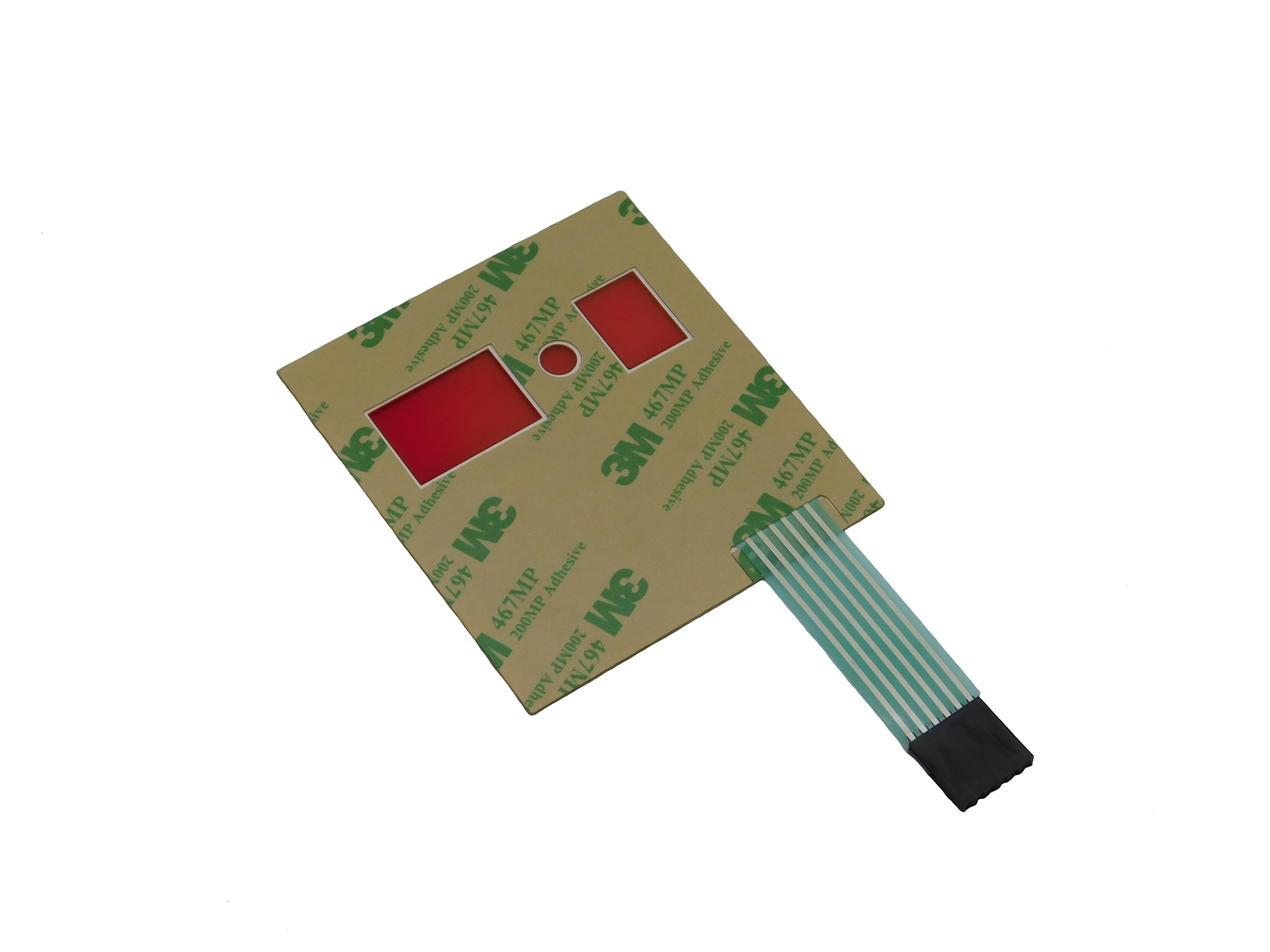This website uses cookies so that we can provide you with the best user experience possible. Cookie information is stored in your browser and performs functions such as recognising you when you return to our website and helping our team to understand which sections of the website you find most interesting and useful.
Adhesives for Membrane Switches
To mount a membrane switch to a panel you use an adhesive layer. Depending on the design of the switch, multiple adhesive layers are required between the circuit layers, such as an adhesive spacer, or adhesive separator. Specifying adhesive performance during the design phase is essential to balance correct performance against overall cost.
What adhesive option are there?
A membrane adhesive permanently bonds together a switch assembly. Most membrane switches use a 3M 467MP pressure sensitive adhesive for the rear adhesive layer. However, depending on the surface the switch is being attached to, different types of adhesives are advised.
For example, if the surface is rough, an EM 468MP adhesive is required. Adhesives must consistently meet external environmental requirements, such as resistance to harsh chemicals, high temperatures, moisture, and humidity, ensuring full functionality when in use.
3M membrane switch adhesives are a popular choice among engineers. Benefits include the ability to die-cut panels and UV resistant properties.
High and low surface energy adhesives are available, offering the ability to bond metal or plastic surfaces. The amount of adhesive-to-surface contact between the membrane panel determines the strength of the bond.
Fitting the adhesive to the panel surface
The bonding surface must be clean and dry to ensure maximum adhesion. Firm pressure to application ensures better adhesive contact and improves bond strength. It takes around 72 hours for the panel to cure fully. The way the bonding strength is applied can affect the overall end application; our engineers can advise if you are unsure of the best application methods.
Other areas that need to be considered as well as the environmental elements, are the thickness of the panel. Ensuring, the correct strength adhesive is used to keep the panel in place.
Additional Adhesive Layers
As mentioned above, additional adhesive layers can be added within the switch assembly, dependent on the type of switch designed.
Graphic Adhesive Layer – Facilitates the assembly of the graphic overlay to the circuit layers. These are usually made from polyester with adhesive on both sides.
Adhesive Separator Layer – An optional layer to assist any additional circuitry requirements.
Rear Adhesive Layer – The mounting surface layer bonds the membrane switch assembly to the product or the rigid support panel, so it must be durable enough to withstand the external environment.

At Diamond HMI
Our engineers will recommend specific adhesives for a membrane panel. The right adhesive ensures reliability and durability, allowing customers to trust that the design stands the test of time. For more information on the construction of a membrane keypad and other areas to consider, download our Membrane Design Guide below.
DOWNLOAD

